Tuft & Needle vs. Leesa
Product
Firmness
Score
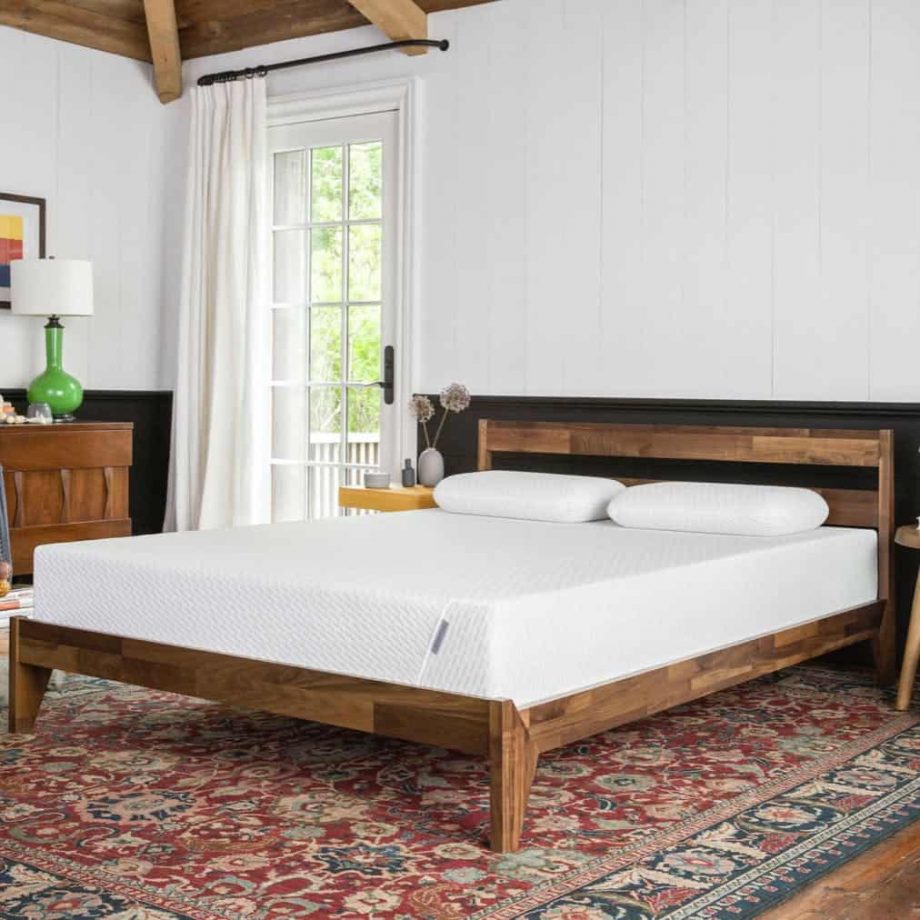
Product
Firmness
Score
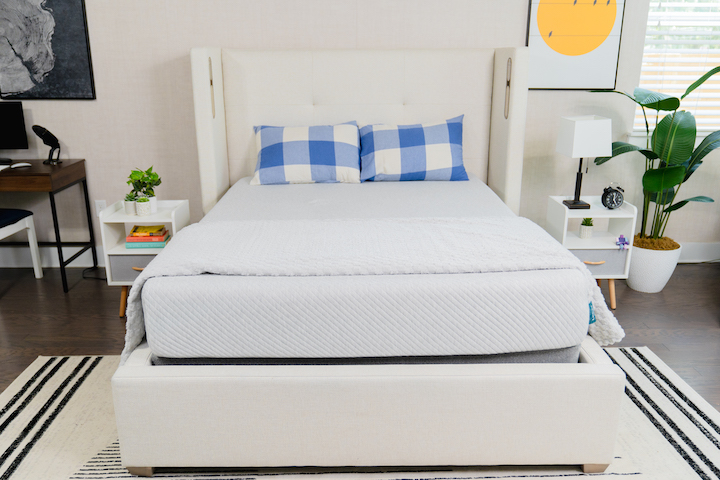
Product
Firmness
Score
Key Similarities
- Both the Tuft & Needle mattress and Leesa mattress are 10” thick.
- Both of these bed-in-a-box options are all-foam mattresses that do not feature coils.
- Both of these online mattresses feature a particularly similar base layer.
- Both the Tuft & Needle and Leesa are close to a medium firmness.
- Both of these mattresses have a balanced foam feel; they are simultaneously soft and responsive.
Key Differences
- The Tuft & Needle mattress is more affordable than the Leesa mattress.
- The Leesa features three layers in its construction, but the Tuft & Needle only features two layers.
- They feature different materials; the Leesa contains memory foam, but the Tuft & Needle does not contain this soft material.
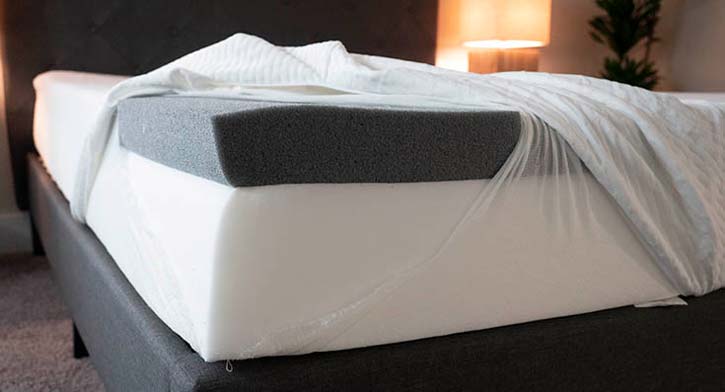
Tuft & Needle Construction
- The Tuft & Needle mattress is 10” tall.
- It has a soft and thin cover that shouldn’t affect the feel of the mattress in any significant way.
- The top layer of the Tuft & Needle contains 3” of Adaptive Foam.
- The bottom layer of the mattress is 7” of standard base polyfoam.

Tuft & Needle Mattress

Product Details
Our Recommendation
Financing Options
Financing options are available for this mattress.
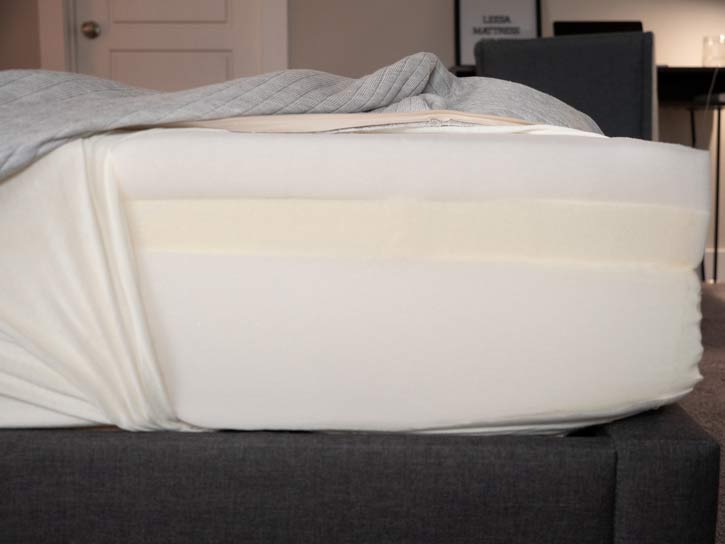
Leesa Construction
- The Leesa mattress is 10” tall.
- The cover is soft, has a sweatshirt feel, and shouldn’t really affect the firmness or feel of the mattress.
- The top layer of the Leesa mattress is 2” of proprietary LSA200 foam.
- The next layer of the Leesa is 2” of pliant memory foam.
- 6” of a base polyfoam can be found on the bottom of the mattress.

Leesa Original Mattress

Product Details
Our Recommendation
Financing Options
Financing options are available for this mattress.
Construction Differences/Notes
- The LSA200 is soft and should help relieve pressure but, dissimilar to memory foam, it is absolutely responsive; this will make it particularly easy for people to reposition their bodies on the mattress.
- While people will get some pressure relief from the LSA200, they will get the majority of their pressure relief from the second layer of memory foam; this comfortable material will allow the mattress to conform to each sleeper’s body and is meant to relieve a significant amount of pressure on the shoulders and hips.
- The Tuft & Needle’s Adaptive Foam feels like a mix between memory foam and latex; it is comfortable and will let sleepers sink in but, like the LSA200 foam, it is very responsive and should allow people to reposition quite easily.
- The mattresses feature some similar materials and should be about equal in terms of durability; both mattresses should be longer-lasting investments.
- The LSA200 foam features a microcell structure, and this makes it significantly more breathable than standard memory foam; Adaptive Foam is also particularly breathable, meaning that both mattresses shouldn’t trap heat and shouldn’t sleep too hot.
- The Leesa has a thicker comfort layer than the Tuft & Needle, so side sleepers, especially those who are larger, will have less of a chance of “bottoming out” on the Leesa; on the Tuft & Needle, larger side sleepers could drop through the comfort layer and engage the support layer beneath.
Firmness/Feel Differences
In my experience, both mattresses felt like a 6.5/10 in terms of firmness – they both have comfortable top layers, and then sleepers get down to some firmer support layers. Larger people might have a different experience; they could press through the comfort layers and feel significantly more firmness, and this is especially possible on the Tuft & Needle. Here is how I feel sleeping on the Tuft & Needle:- The Tuft & Needle feels very supportive when I am back sleeping on the mattress; I am also feeling the Adaptive Foam conform to the shape of my body, and I feel like it is a particularly nice option for back sleepers.
- When I am side sleeping, the Tuft & Needle does feel comfortable but, again, larger side sleepers could press through that layer of Adaptive Foam and feel some significantly more pressure on their shoulders and hips.
- Stomach sleeping, the Tuft & Needle is not quite giving me the support I require; stomach sleepers are probably going to want to look for a firmer mattress.
- Back sleeping on the Leesa, I also feel some satisfying support – the mattress is also contouring to the curves of my body, and I would say both mattresses are an comparable match for back sleeping.
- Lying on my side, I feel superior pressure relief on the Leesa; the thicker comfort layer is ensuring I don’t feel a significant amount of pressure on my shoulders and hips. This isn’t surprising since Leesa makes some of the best mattresses for side sleepers.
- The Leesa is also not a fantastic match for stomach sleeping – I do feel like I need a firmer, more supportive mattress.
Motion Transfer Differences
For those who sleep with a partner, motion transfer is particularly important; they want to ensure that when they move around at night, they are not disturbing their partner and vice versa. To assess how well each mattress handles motion transfer, I first employed a glass of water; I placed the glass of water in the middle of the Tuft & Needle and, when I pushed into the other side of the mattress, I saw just a bit of disturbance in the water. I did the same test on the Leesa, and saw less disturbance in the water; I also lay down on each mattress while Marten moved around on the other side and felt fewer of his movements on the Leesa. The Leesa mattress contains memory foam, a material that is known for isolating motion quite well; these tests let me know the Leesa might be the best mattress for couples. See how the Tuft & Needle performed in the video below. Now, compare this to the Leesa.Edge Support Differences
If someone wants a mattress for couples, it is also worthwhile to think about edge support; when one sleeps with a partner, it is nice to have as much room as possible so that each partner can sleep toward the edge without feeling like they are going to fall off. Sitting near the edge of both mattresses, they do collapse quite a bit; these are both all-foam mattresses, and they don’t feature edge support systems, so I don’t feel particularly secure sitting and lying down near the edge of the Tuft & Needle and Leesa. Check out the edge support on these mattresses in the photos below.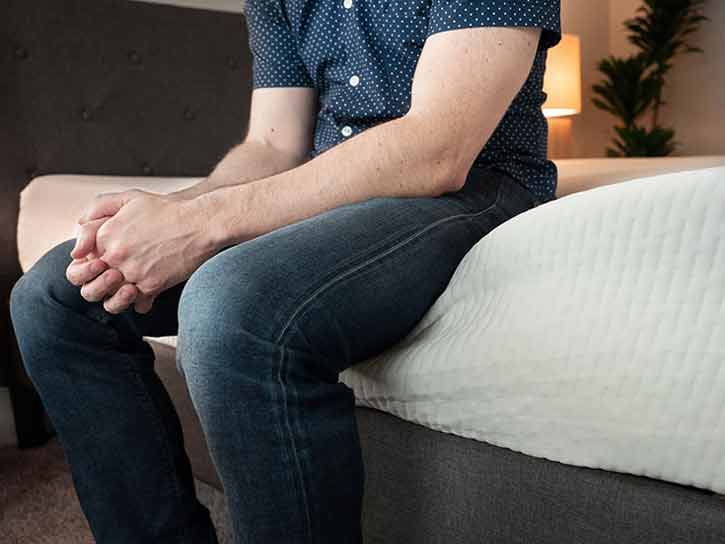
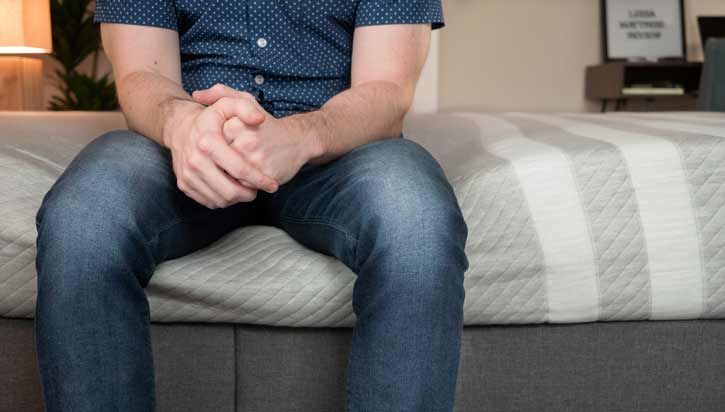
Marten’s Take
As I mentioned earlier, someone’s experience with these mattresses will depend greatly on their weight; since I am 5’9″ and 160 lbs, I thought it would be an excellent idea to get the opinion of a larger person. Marten is a staff writer at Mattress Clarity; he is 6’7″ and weighs 230 lbs, so let’s see what his experience was like with the Tuft & Needle and Leesa. Joe said these mattresses were close to a 6.5/10 in terms of firmness, and I actually agree; I feel like they are both medium-firm mattresses. Here is how I feel sleeping on the Leesa mattress.- First off, I feel very nice back sleeping on the Leesa; I feel like the mattress is quite supportive, my hips sink in just a bit, and I am also feeling some decent contouring.
- Moving to my side, I am feeling only a little pressure on my shoulders and hips, so it is a fairly good match for side sleeping.
- Stomach sleeping, the mattress is too soft for me; I am bowing in at the hips, and I feel some strain in my lower back, so I definitely need more support in this position.
- Back sleeping, I am not getting enough support on the Tuft & Needle; this is probably because of the simplicity of the construction, and the Adaptive Foam is letting me drop through the mattress.
- When I am on my side, I am feeling some okay pressure relief, but I do feel better pressure relief on the Leesa.
- Moving to my stomach, the mattress is not supportive enough, and I am also bowing in at the hips.
The Tuft & Needle Should Work For …
- Lightweight people. For those who aren’t extremely heavy, the Tuft & Needle could give them all the support and comfort that they require; if someone is a light person, they shouldn’t press through the thinner comfort layer.
- Those who want a more affordable option. The Tuft & Needle is more affordable than the Leesa so if someone just can’t decide between the two mattresses, they could save money by going with the Tuft & Needle.
- Those who want something simple for a guest bedroom or teen’s room. The Tuft & Needle is definitely the more streamlined model of the two; if someone need a bare-bones mattress for guests or a teenager to sleep on, the Tuft & Needle is a comfortable, affordable option.
The Leesa Should Work For …
- Larger people. For those who are on the heavier side, the Leesa should be a better match; this is especially true for larger side sleepers. The mattress features a thicker comfort layer so they shouldn’t drop through the mattress and hit the firm support layer.
- Side sleepers. Those side sleepers, smaller or larger, should consider the Leesa mattress; the Leesa has a thicker comfort layer than what one finds on the Tuft & Needle, so side sleepers should feel superior pressure relief.
- Those who sleep with a partner. The Leesa should be the better mattress for couples because it contains a layer of memory foam, a material known for isolating motion; if either partner changes positions at night, the other partner should feel less disturbance on the Leesa.

